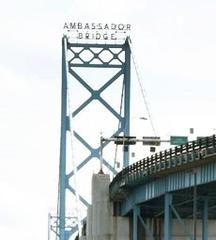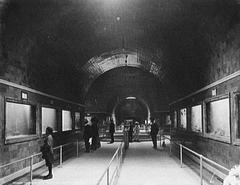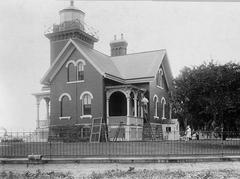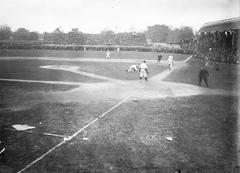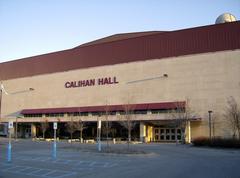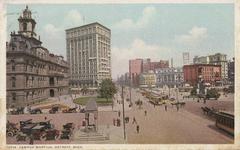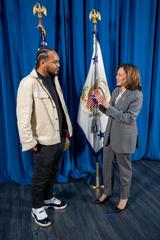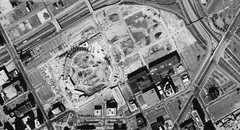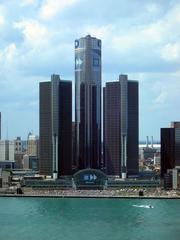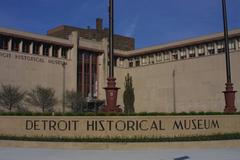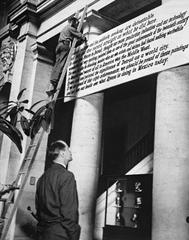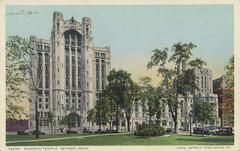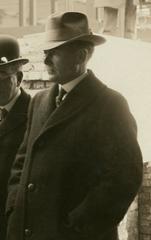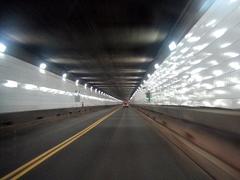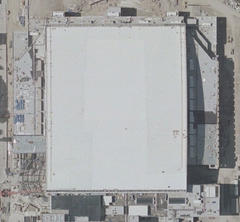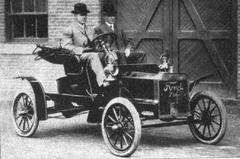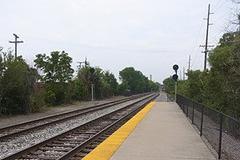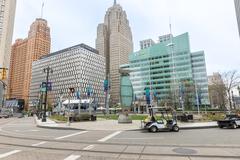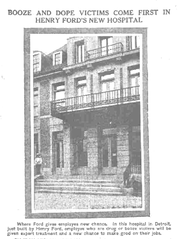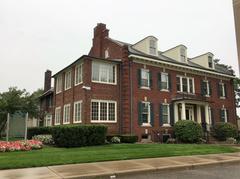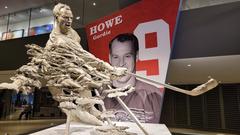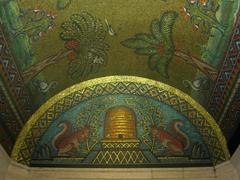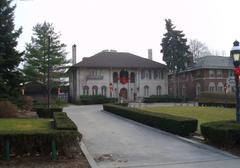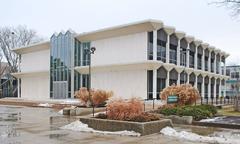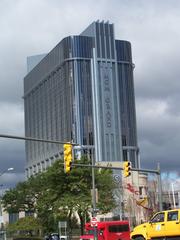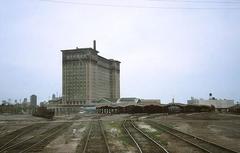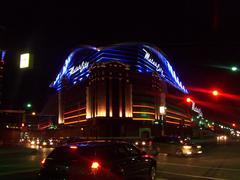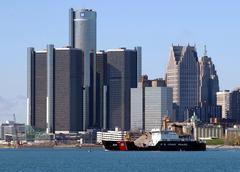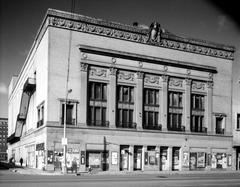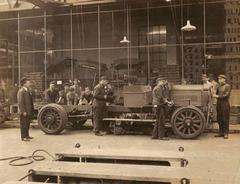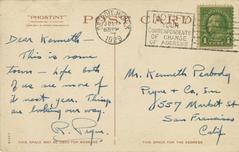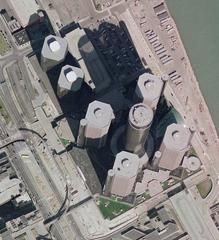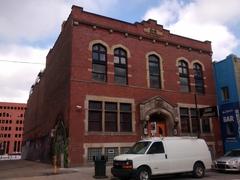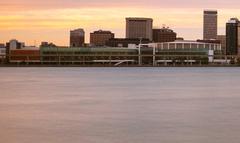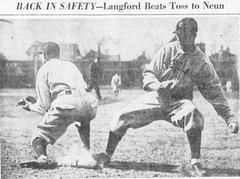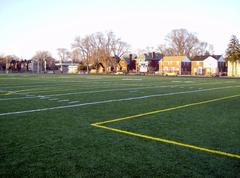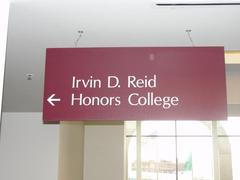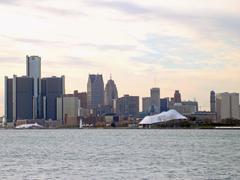
First Presbyterian Church Detroit: Visiting Hours, Tickets, and Historical Guide
Date: 04/07/2025
Introduction
The First Presbyterian Church in Detroit stands as a testament to the city’s enduring religious, architectural, and civic legacy. Founded in the early 19th century and now home to the Ecumenical Theological Seminary, the church is Michigan’s oldest Protestant congregation. Its roots are deeply intertwined with Detroit’s transformation, contributing to education, healthcare, and community life. This comprehensive guide explores the church’s history, architectural highlights, visiting information, community impact, and travel tips, ensuring a memorable and meaningful visit (Detroit Historical Society; Historic Detroit; Ecumenical Theological Seminary).
Table of Contents
- Architectural Evolution and Highlights
- Artistic and Cultural Significance
- Urban Transformation and Modern Challenges
- Transition to the Ecumenical Theological Seminary
- Visiting Information
- Community Engagement and Social Impact
- Frequently Asked Questions (FAQ)
- Practical Tips for Visitors
- Conclusion
- References
Early Foundations and Protestant Beginnings
Established in 1816 by Rev. John Monteith—invited to Detroit by Governor Lewis Cass, Father Gabriel Richard, and Judge Augustus Woodward—the First Presbyterian Church is Michigan’s oldest Protestant congregation. At its inception, Detroit’s religious landscape was predominantly Catholic. The early congregation initially convened in the Detroit Council House at Jefferson and Randolph Streets. In 1821, it became the First Protestant Society, and by 1826, it reorganized as a Presbyterian church (Detroit Historical Society; Historic Detroit).
Rev. Monteith was also instrumental in founding the Catholepistemiad, precursor to the University of Michigan, and the church’s commitment to social welfare led to the establishment of Harper Hospital in 1861 (Detroit1701.org).
Architectural Evolution and Highlights
As Detroit flourished, the congregation relocated several times, finally settling on Woodward Avenue and Edmund Place. The current church, completed in 1891, is a masterwork of Richardsonian Romanesque design by George DeWitt Mason and Zachariah Rice. The robust stone façade, rounded arches, imposing 90-foot tower, and a Greek cross floor plan distinguish it from typical Gothic structures (Detroit1701.org; Wikipedia).
Architectural Details
- Exterior: Red Portage limestone, red sandstone tower, slate roof, and corner turrets.
- Interior: Greek cross layout, detailed woodwork, and high vaulted ceilings.
Artistic and Cultural Significance
The sanctuary is renowned for its stained glass windows crafted by Tiffany & Co. and Nicola d’Ascenzo Studios. Notable installations include the “John of Patmos” window and “The Good Tidings,” commemorating Rev. Monteith’s first sermon. The “Flames of Fire” window, by the Detroit Stained Glass Company, symbolizes the Day of Pentecost. The adjacent church house, added in 1911, expanded outreach capabilities (Detroit Historical Society; Historic Detroit).
Urban Transformation and Modern Challenges
The church’s carved entrance porch was relocated during the 1930s Woodward Avenue widening, altering its original appearance (Wikipedia). Post-WWII demographic changes led to a decline in membership, but the church adapted, serving broader urban communities. In 1979, it was listed on the National Register of Historic Places and received a Michigan state historical marker a year later (Historic Detroit).
Transition to the Ecumenical Theological Seminary
In 1990, the congregation merged with Westminster Presbyterian Church, and the Ecumenical Theological Seminary (ETS) moved into the historic building. ETS, founded in 1980, emphasizes Christian traditions, interfaith dialogue, and urban ministry, offering Doctor of Ministry and master’s programs. In 2002, ownership transferred to ETS, ensuring the site’s continued preservation and educational mission (Detroit Historical Society).
Visiting Information
Hours and Admission
- Visiting Hours: Monday–Friday, 9:00 AM–5:00 PM. Hours may vary during holidays/special events; confirm in advance.
- Admission: Free for general visits. Special events or guided tours may have fees—contact the seminary for details.
Guided Tours
Guided tours are available by appointment, offering insights into the church’s history, architecture, and stained glass. Arrange tours through the Ecumenical Theological Seminary website.
Accessibility
The church provides wheelchair access, ramps, and suitable facilities for visitors with mobility needs. Contact the seminary to discuss specific accommodations.
Location and Transportation
- Address: 2930 Woodward Avenue, Detroit, MI 48201
- Transit: Accessible via car, public transit, Detroit People Mover, and QLINE streetcar.
- Parking: Public lots and metered parking nearby; availability varies during events.
Nearby Attractions
Situated in Midtown, the church is steps from the Detroit Institute of Arts, Detroit Historical Museum, Motown Museum, and Detroit Riverwalk (Tourist Places Guide).
Photography
Personal photography is generally allowed. Always confirm with staff, particularly during services or special events.
Community Engagement and Social Impact
First Presbyterian Church has been a leader in social justice and community outreach, from founding Harper Hospital to modern initiatives addressing poverty, hunger, and education. Programs such as school supply drives and food security campaigns remain central to its mission (FPCRO Events). The church also supports Detroit’s arts scene by hosting concerts and exhibitions, and is active in interfaith dialogue and advocacy, including the Matthew 25 initiative and the CROP Hunger Walk (FPCRO Events).
Sustainability efforts, urban farming, and inclusive programming further demonstrate the church’s commitment to Detroit’s resilience and renewal (Amber Everywhere).
Frequently Asked Questions (FAQ)
Q: What are the standard visiting hours?
A: Monday–Friday, 9:00 AM–5:00 PM. Confirm in advance due to event schedules.
Q: Is there an admission fee?
A: General admission is free. Some tours/events may have fees; inquire ahead.
Q: Is the building wheelchair accessible?
A: Yes, but contact the seminary for specific accessibility needs.
Q: Is photography permitted?
A: Personal photography is allowed; ask staff during events or services.
Q: How do I book a guided tour?
A: Visit Ecumenical Theological Seminary’s website or call +1-313-831-5200.
Q: Where can I park?
A: Public lots and metered street parking nearby; spaces may be limited during events.
Practical Tips for Visitors
- Plan ahead: Contact the seminary to confirm hours and book tours.
- Combine your visit: Explore neighboring Detroit landmarks for a full experience.
- Dress appropriately: Modest attire and comfortable shoes are recommended.
- Respect the space: Be mindful of the church’s active educational and reflective environment.
- Check the calendar: Look for concerts or cultural events during your visit.
- Prepare for weather: Detroit’s climate varies—dress accordingly (Wanderlog).
Conclusion
The First Presbyterian Church Detroit remains a beacon of history, architecture, and community for visitors and Detroiters alike. Its Romanesque grandeur, historical significance, and ongoing educational and social missions make it a standout destination on Woodward Avenue. With accessible visiting options, guided tours, and a central location near Detroit’s top attractions, the church offers a rewarding experience to history enthusiasts, architecture lovers, and anyone eager to explore the city’s spiritual and civic heritage.
For the latest updates, tour bookings, and event information, visit the Ecumenical Theological Seminary website.
References and Further Reading
- Detroit Historical Society
- Historic Detroit
- Detroit1701.org
- Wikipedia: Ecumenical Theological Seminary
- Ecumenical Theological Seminary
- Tourist Places Guide
- Wanderlog
- FPCRO Events
- Amber Everywhere
Download the Audiala app for curated Detroit tours, event alerts, and travel tips. Follow us on social media for more updates and insights into Detroit’s historic sites.


